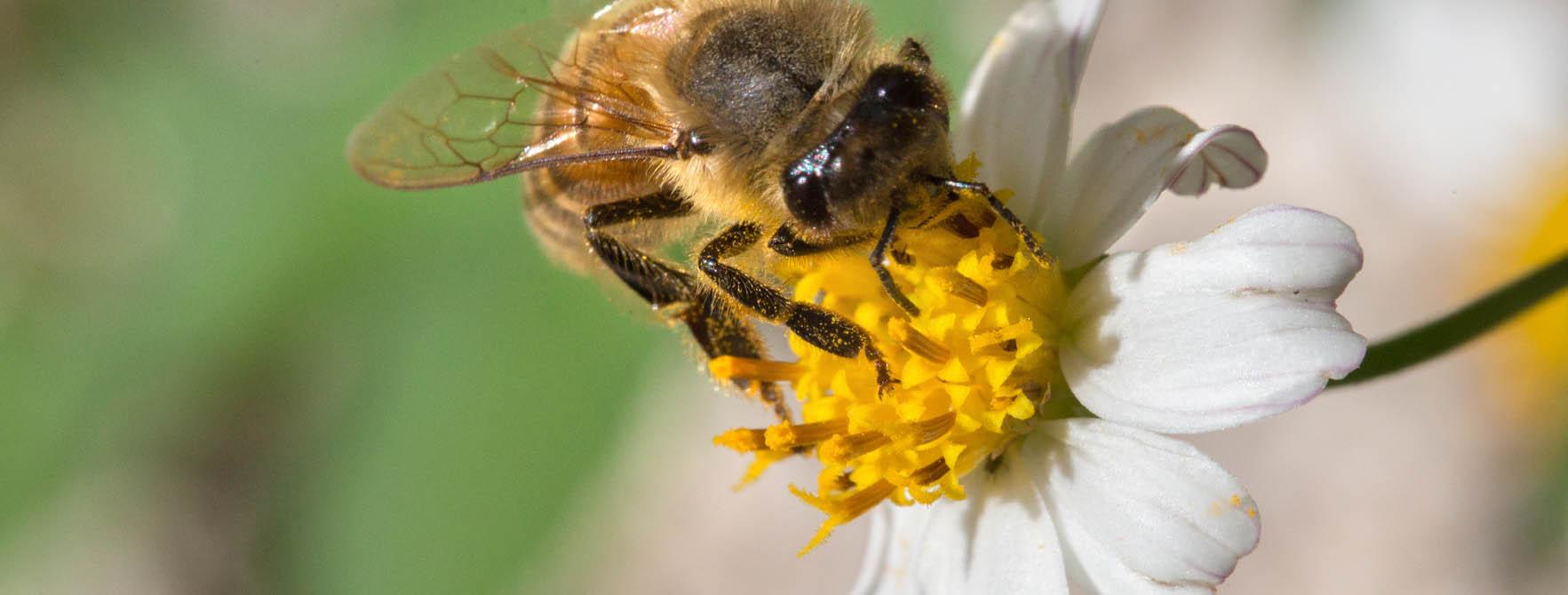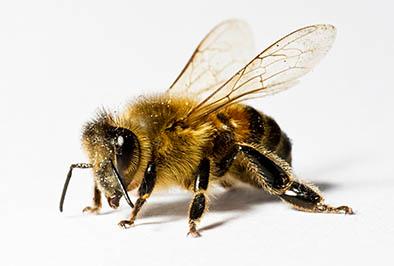
The Honeybee is one of the most important insects to the environmental ecosystem. Providing plenty of benefits, these insects have a huge impact on your everyday life with their pollination process.
During a collection of pollen or nectar, a honeybee will stop and pollinate between 50 to 100 flowers while on its trip.
So ... What's a Honeybee?

The honeybee is a flying insect that is closely related to ants and wasps. Found on all continents besides Antarctica, these bees are true to their name as they produce honey. Honeybees are social insects and live together in hives.
Honeybees are predominately golden-yellow with brown bands and can range in length from ½ inch to 5/8th of an inch. They have an enlarged bottom portion of their abdomen and have small, pale hairs all over their body. Honeybees are also characterized by a stinger, 2 antennae, and 6 legs, but otherwise can vary in characteristics from male to female.
Diet of Honeybees
Honeybees survive on the pollen and nectar of flowers and other plants. Worker bees leave the hive to gather the pollen, which eventually gets fermented into a sort of ‘bee bread.’ This provides the bees with protein within the hive.
As for the nectar they collect and bring back, it’s used for honey production. Honey is high in carbohydrates and is a rich source of food for the hives' younger members.
Examples of plants that bees pull resources from are fruit trees, dandelions, milkweed, clover, and all sorts of flowers.
Honeybee Habitat
Honeybees can thrive in almost any environment where they have the resources they need. That being said, they enjoy areas that have a presence of flowers and fruit. Gardens, meadows, orchids, woodlands, and any other area that has flowering plants are very attractive places for these insects. They prefer to build their hive in areas where predators cannot get to them, like in cavities of trees or under the ledge of an area to stay hidden.
Honeybees thrive in warmer, tropical weather. During the winter, in locations that get cold, worker bees will insulate and build up the hive to stay warm and help regulate the interior temperatures, so they survive the colder months. During this time, the bees are dormant inside the hive until spring. They will start to forage for materials they need for the next winter as soon as they can.
Benefits
The honeybee is very beneficial to the environment in which they live. As they collect pollen and nectar, they pollinate flowers. They carry pollen from flower to flower, which in turn helps the flower grow and blossom. This doesn’t only benefit your garden-variety flowers, but it also helps crops, trees, and other plants to grow and spread.
Without bees and other beneficial pollinators, flowers wouldn’t have a way to reproduce. They are a major factor in the environmental ecosystem that keeps everything in nature balanced. Some flowers solely reproduce through the bee's pollination process. This means without the bees, some of your favorite plants might be extinct.
Honey is the only product that insects produce in which humans consume. Used for all sorts of food and other natural remedies, these insects provide us with a useful resource that doubles as a delicious treat.

